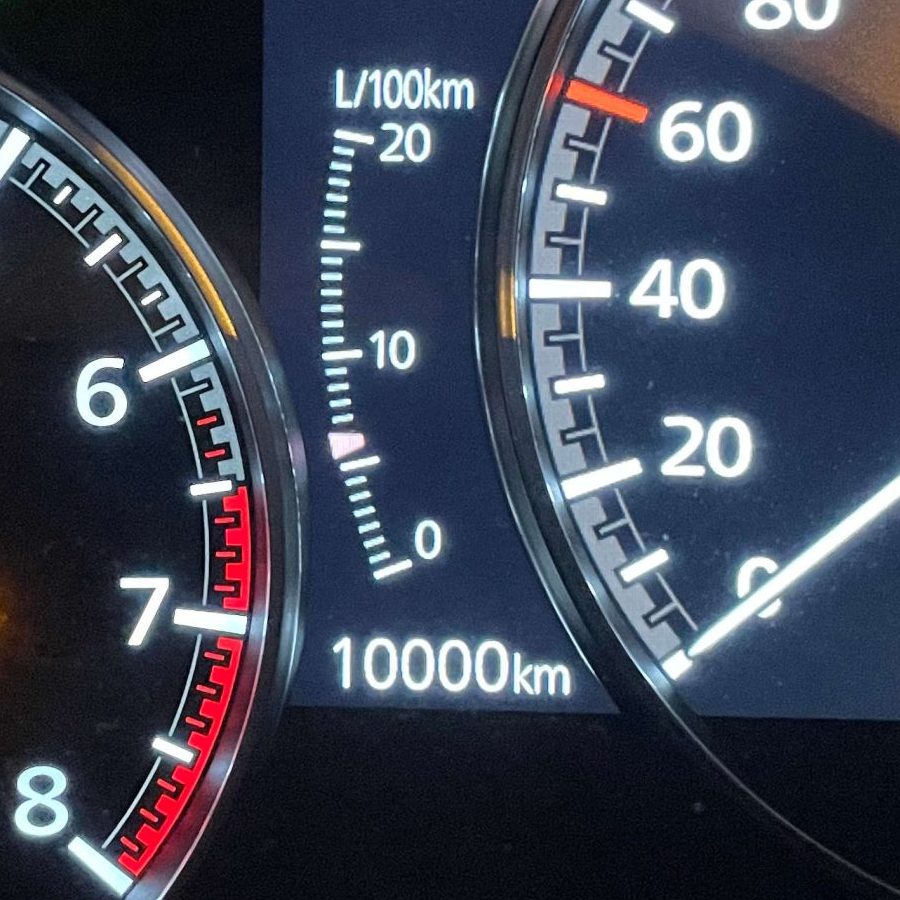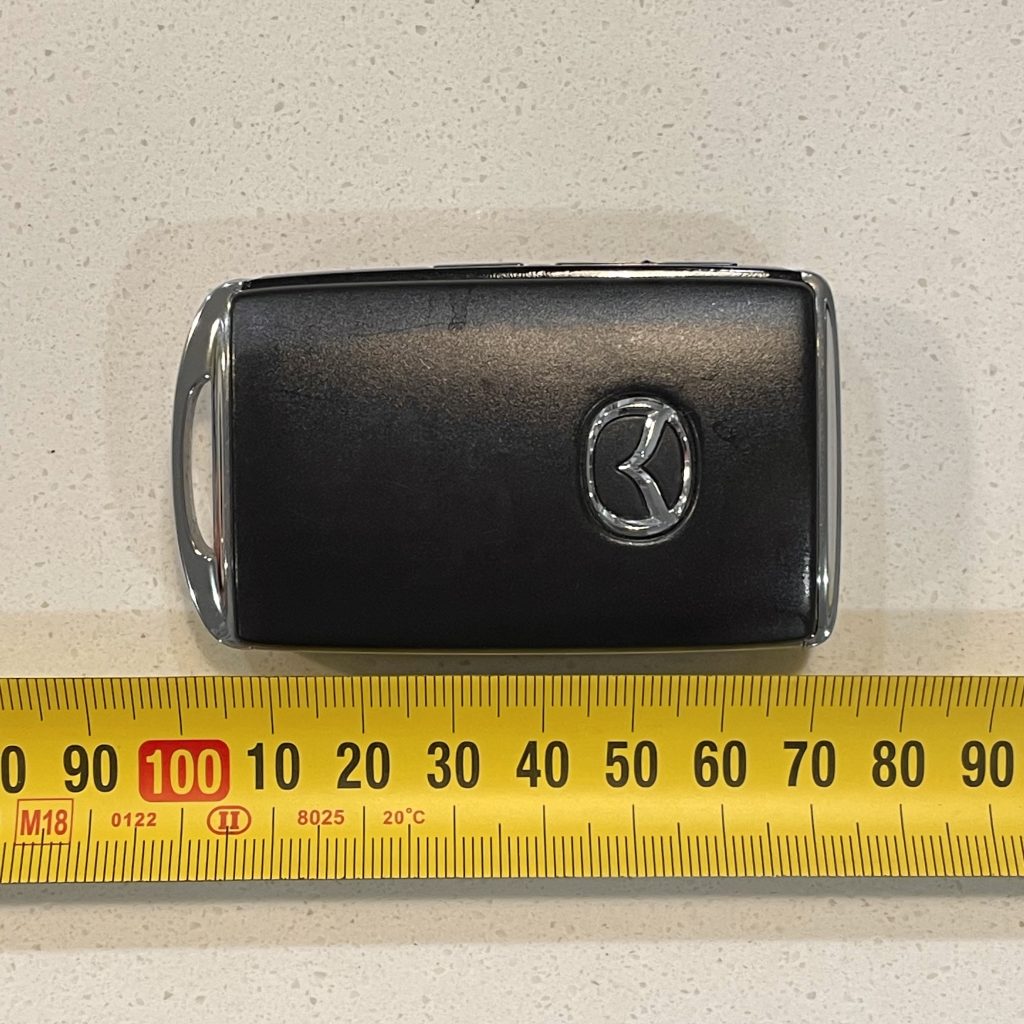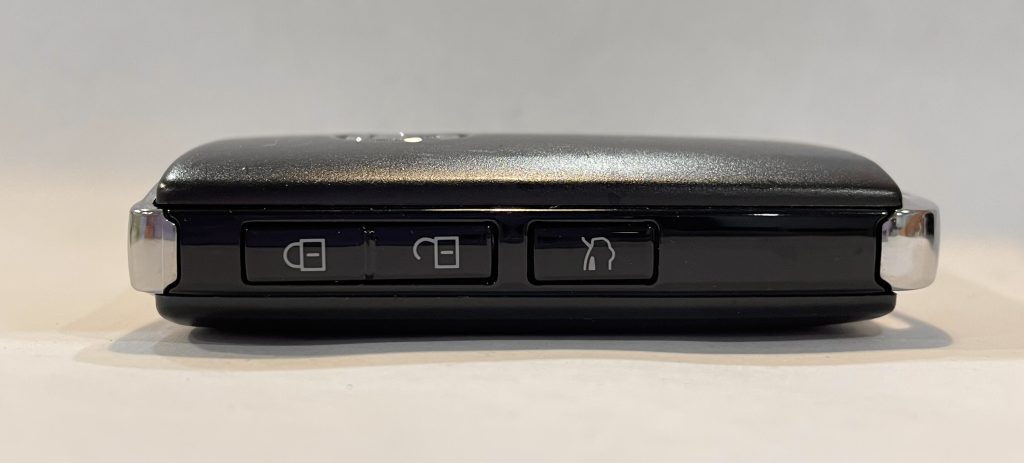Earlier this year in February, I finally took delivery of my Mazda3 that I ordered in October the year before (2022). Since then, I have reached the 10,000 km milestone and have accumulated some thoughts about the vehicle, both positive and negative, which I will share in this blog post. This is not meant to be a comprehensive review, rather I am detailing some experiences that I think are worth sharing.

Background
I ordered the car back in October 2022 and production completed in December 2022. Delivery took another 2 months partly because, for some reason, the ship docked on the other side of the country in Perth and had to be trucked all the way to Brisbane.
The full model designator of the vehicle is 300P6S4G25ESP. It looks like last 6 characters designate the engine and trim level ‘G25 Evolve SP’. I was told by the dealer that the ‘P’ indicates the minor model or facelift revision. I’m not sure where this index starts, but indeed there has been some cosmetic changes since the initial release of the fourth (BP) generation. There doesn’t seem to be documented revision history, but the obvious ones are rear tail light design and indicator fade-out animation.
Parasitic battery drain
Let’s start off with the biggest issue I’ve had since I got the car. A couple weeks after I took delivery, I was greeted with a dead battery one afternoon. At first, I thought the fault was mine as I had left the boot open so perhaps the interior light ran the battery flat. It didn’t make too much sense as I know the car does shut off the electronics after some time, presumably to prevent a situation like this. I charged the battery up and figured if it happened again, I would look into it.
Fast forward a couple more months and the battery ran flat again. This time, however, I did not leave any doors open so I knew whatever happened wasn’t because of my actions. So, I called up the dealership and made an appointment to have them look into it.
When I brought it in, the tech immediately had an idea on what the problem could’ve be. Turns out, there is a service bulletin for the radio tuner where it may not sleep properly, causing the battery drain issue that I experienced. The tech updated the software via USB in the infotainment’s diagnostic menu (music + favourite + pwr/mute buttons). All in all, it took about 10 minutes and I was on my way. Since then, I’ve not experienced any more battery drains so it would seem like the issue has been solved.
The negatives
While this car is mostly positives, it is not without some negatives. In the following sections I’ll be noting some of things I am not a big fan of with this car.
Cylinder deactivation
At the time of purchase, there were 3 engine variants available – the G20 (2.0L) and G25 (2.5L), and X20 (2.0L). All are 4 cylinder and naturally-aspirated. In addition to the greater displacement, the G25 variant has cylinder deactivation wherein the 2 outer cylinders are deactivated under certain conditions to save fuel. Indeed, the G25 has a claimed combined fuel economy of 6.2 L/100km while the G20 has a figure of 6.3 L/100km (manual transmission). Mazda don’t specify what the conditions are for cylinder deactivation to activate, but based on my experience it activates when the engine speed is approximately 1500+ rpm and the engine load is light. The vehicle speed does not seem to affect it.
The problem with cylinder deactivation is that when you are accelerating lightly, a slight judder is noticeable. As you gradually depress on the accelerator pedal, the judder disappears right when cylinder deactivation stops. On the motorway, however, this judder is not noticeable and you only really feel the transition which is tolerable.
Apart from being an annoyance, I’m not sure what sort of effect this has on the reliability of the engine. In my opinion, the fuel savings gained from this feature is not worth the added discomfort and any potential issues that may arise in the future as a consequence from un-even engine wear. More recently though, Mazda recently introduced cylinder deactivation on the G20 engine which no matter which engine size you choose, you will be stuck with this feature. Regardless, I wouldn’t say it is a dealbreaker but it is something to keep in mind.
Radar cruise control
Like with most modern cars now, the Mazda3 comes with adaptive or radar cruise control (RCC). This is where you set a speed and headway distance which the car will attempt to maintain using a front-firing radar, speeding up and slowing down as necessary. When the radar detects a vehicle ahead, the HUD will display a car icon to acknowledge its presence and also on the instrument cluster. The position of the car icon in the instrument display also varies with the actual following distance.
There are 4 headway distances you can set which is great as you can adjust your headway according to traffic conditions. Unfortunately, the car attempts to maintain the set headway way too aggressively, resulting in unnecessary braking when a vehicle slows down or merges in front of you. If the speed difference between your car and the car ahead is small, then the system works well as the speed adjustment required is minor. In comparison, the RCC in the Toyota Corolla Hybrid is much smoother allowing the headway to vary slightly in order to reduce the rate of deceleration and acceleration. In my opinion, the RCC in the Mazda3 is too religious at maintaining the set headway and using system in anything more than light traffic becomes unbearable. You can switch the radar control off and revert back to conventional cruise control, but the setting does not persist and resets upon the next ignition cycle.
If you option the car with the Vision package or buy the top trim Astina, you get what Mazda calls ‘Cruising and Traffic support’. This extends the RCC to work down to standstills and also provides some steering assistance. I’m not sure how well the CTS works in slow moving traffic and if you get the same level or jerkiness as you do on motorways, but it would be interesting to see.
Keyless entry and fob design
In the fourth generation of the Mazda3, the keyless locking and unlocking is now done through capacitive touch sensors on the driver and passenger door handles. Detection wise, it works well but the detection speed can be a bit slow compared to other manufacturers. I find myself grabbing the handle and waiting for about half a second before the car unlocks.
What is an annoyance though is the fact that if the driver’s door is unlocked but the passenger side isn’t, touching the passenger door handle does not trigger an unlock. You can either get out the key and press the unlock button, or walk all the way to driver’s door, open it, and push the unlock button next to the window switches.
Not only did Mazda update the keyless entry mechanism, they also updated the key fob design. Except, they managed to make it worse. It’s been made bigger and the buttons have been moved to the side. Sure, it may look nicer but that comes at the cost of practicality. Not only that, but the hard plastic they used scratches very easily. I don’t keep my key on a key chain, so I can only imagine how scratched it would get it if it was on one.


Rattles
Apart from the aforementioned battery drain, I’ve not had any other major issues with the vehicle thus far. The interior build quality is generally quite nice, but I have noticed the odd squeak and rattle here and there. For example, the tweeter frame on the driver’s door, the plastic frame can occasionally squeak from rubbing on its surroundings. Giving it a bit of a push seems to stop it for a while.
Another interesting sound is from the climate control system, presumably the blower fan. During colder temperatures, a rather faint squeak comes from the glove box area. Adjusting the fan speed changes the pacing of this squeak and turning off the fan stops the noise completely.
Other minor annoyances
- The dimmable regions of the rear view and driver exterior mirror don’t reach to the edges of the mirror. Instead, there is a gap of around 5 mm around the edges of the rear-view and exterior driver mirror where it does not dim.
- The amount of driving information that can be displayed in the instrument cluster is very limited in that you can only view the average fuel consumption. There is an option to show some driving statistics on the centre display when you switch the car off, things like driving duration and distance, but really Mazda should have made these visible during the drive in the instrument display.
- The clock is only visible on the centre display. So that means if you decide to turn off the centre screen, you cannot tell the time unless you turn the screen back on.
- This one is more of a bug than an annoyance, but on one occasion I had the boot randomly open while the vehicle was in motion. I distinctly heard the latch unlock so something definitely triggered the opening, but just not sure what.
Interesting notes
- The 6-speed manual has an upshift rev match assist, though this isn’t mentioned in the manual.
- Operation of the power windows is not allowed during engine cranking.
- The vertical throw of headlamps is electronically adjustable (via motors), though not manually. You can notice this when the car starts up – the lights tend to ‘dip’ slightly. Perhaps the car does some compensation based off the forward-facing camera?
- If the rain sensor is disabled, the intervals of the intermittent wipers are still adjusted based on speed. For example, the shorter intervals will automatically become continuous at higher speeds.
- The radio is automatically muted if the horn is used.
Overall thoughts
Having driven competing cars in this segment, the Mazda3 is without a doubt a well thought out car, largely owing to Mazda’s attention to detail. The Mazda3 sets itself apart from the competition by not choosing to not jump on trend bandwagons, but rather take more traditional approaches with refinements. Take the instrument cluster for example, it mostly consists of analogue dials, but has a centre screen to augment what a traditional dial gauge can’t display. If you have cruise control turned on, there is an indicator in the virtual speedo to show you your current set speed. Personally, I think this is an excellent use of modern technology to augment a traditional experience rather than presently something radically different.
Fuel economy wise, most of my driving is done on the motorway and I get a per-tank average of around 5.5-6.3L/100km. This quite a decent figure and not too far off the claimed combined average of 6.2L/100km.
To conclude, I am clearly happy with my Mazda3 despite the small annoyances here and there. In a day and age where appeal takes higher precedence over functionality, it’s refreshing to see a car that’s been designed to used and enjoyed rather than to impress.
